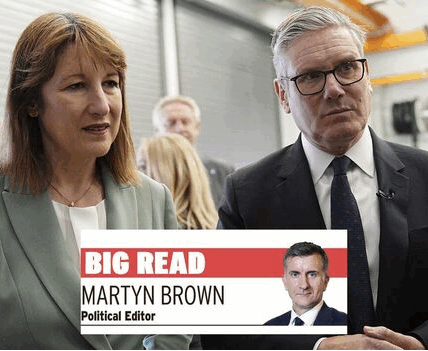UK households have been left wondering when they should turn their heating back on and experts have shared the ‘exact’ date

NHS says your main living room should be around 21C (Image: Getty )
Heating firms have revealed the ‘exact date’ when British households ought to consider switching their central heating back on, based on Met Office information. The NHS has also indicated the ideal indoor temperatures.
Google searches for “when is it cold enough to put the heating on” have rocketed by more than 750% over the past month, highlighting widespread public anxiety.
Heating specialists have analysed temperature records to establish the precise date when Brits should alter their thermostat settings.
The team at BestHeating has examined Met Office statistics from the previous three years to determine how long homeowners should probably wait before turning on their heating. The team has also provided guidance on maintaining affordable energy costs.
The NHS advises switching on heating for health purposes once external temperatures drop beneath 15C, reports the Daily Record.
As part of the government’s Keep Warm, Keep Well incentive, the NHS says: “By setting your heating to the right temperature, you can keep your home warm and lower your bills.
“Your main living room should be around 21C, your bedroom should be 18C and the rest of the house at least 16C. Above this and you may be wasting money; below this and you may be risking your health.”
Keeping the heating on is beneficial for your health as it helps lessen the risk of severe health issues linked to cold weather, including heart attacks, strokes, and pneumonia.Staying warm can also lower the chances of catching colds, the flu, and experiencing depression.This is especially crucial for elderly people, those with chronic health conditions, or people with limited mobility, who are more susceptible to the cold’s effects.
Based on Met Office statistics, UK householders can expect to formally commence their heating on October 17 – a month sooner than earlier predictions for 2024. From this date onwards, average temperatures aren’t anticipated to surpass 15C for the rest of the year.
Compared to last year’s prediction of November 17 as the date to fire up the boiler, the figures suggest that Brits will need to switch on their heating a complete month sooner, making money-saving tactics more vital than ever.

The date is a month earlier than predicted in 2024 (Image: Getty)
Heating technology expert at BestHeating, John Klee, said: “Whilst there isn’t an optimum time to switch heating on, our research shows that once temperatures are below 15C, often around October or November, it is best to turn the heating on as we feel the chill more. By the end of the month, even the hardiest among us will have their heating on to keep warm as temperatures are predicted to drop further.
“If it is below 13C outside, then health issues can arise, especially in vulnerable people. With many worried about their finances, it can be tempting to hold off putting the heating on, but be careful delaying this too long, as it can cause more issues than it’s worth.
“For those struggling, we recommend contacting your local council or energy supplier as there are often grants and help available to keep you safe throughout winter.”
John has offered three pieces of guidance to assist Brits in keeping bills as minimal as possible during the chilly months.
1. Only heat the room you are in
“One of the simplest mistakes people make during winter is heating an unused space. Make sure to turn radiators off in rooms that are not in use, such as bedrooms, throughout the day. The one caveat to this is not to turn the radiators off in the room where the thermostat is located, or it could cause issues with the temperature of the rest of the home. Doing this will improve the boiler’s efficiency, allowing rooms you are in to warm quicker and saving over £100 for heating if used daily.”
2. Turn the thermostat down by one degree Celsius.
“Research shows that by reducing a home’s temperature by a little, good savings can be made on energy bills, 20.8C is the average thermostat setting in the UK, but 18C should keep you comfortably warm throughout the colder months. This can save up to 10% on a fuel bill or an estimated £80. A clever way to assess if the heating is too warm is to turn the thermostat down by one degree C and see how you feel.”
3. Choose the best times of day to blast the heating.
“To keep bills low, be clever with when your heating is turned on. If the temperature is going to be lower than 10C, set it to come on an hour before your alarm to take away the chill. If you are out all day, then do the same in the evening. Anyone with a Smart thermostat will be able to control their heating more easily, as they can make sure there is no wasted energy when out at work or shopping and can also set it so that they return to a warm house that is cost-effective.”


